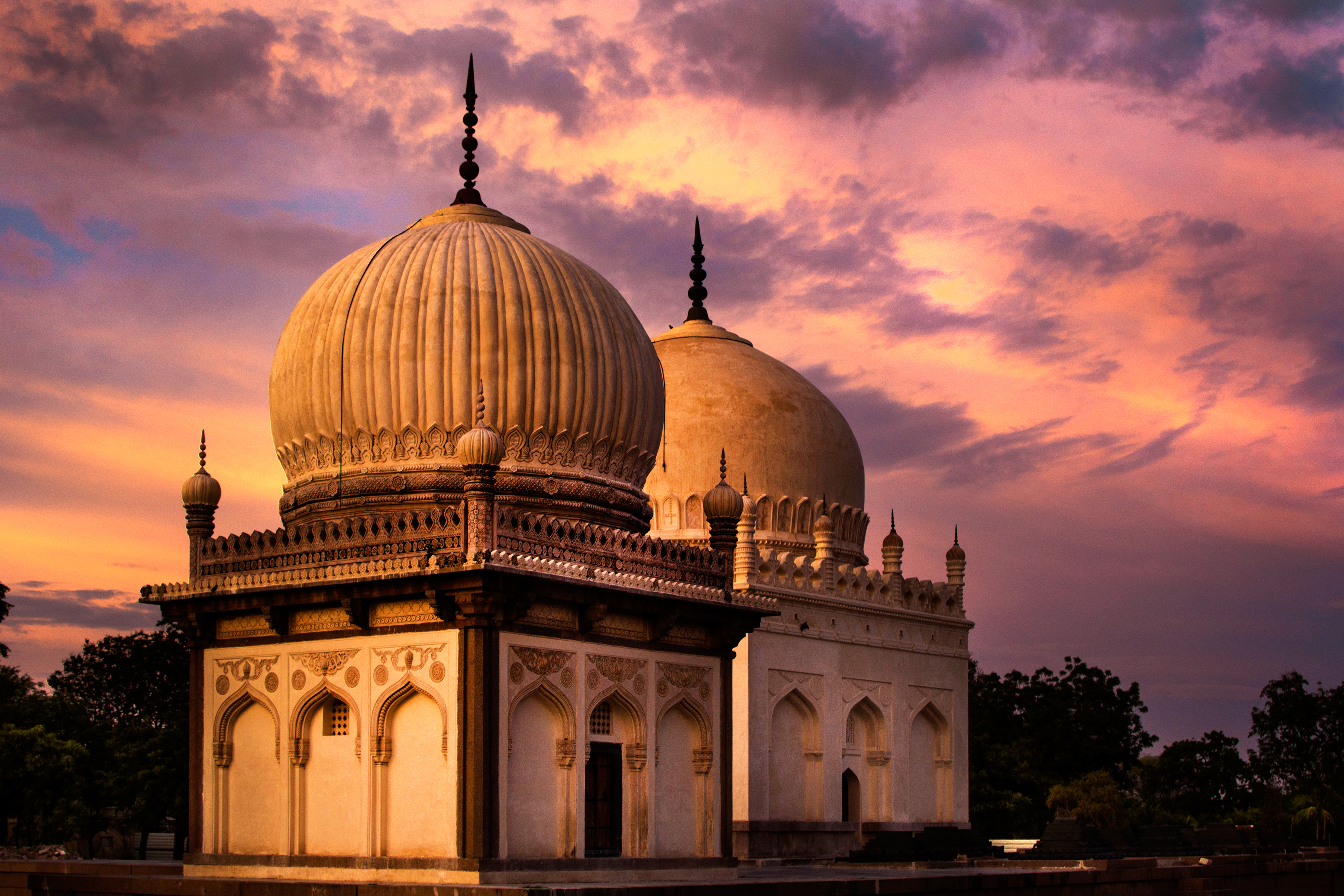Golconda Fort stands as a magnificent testament to medieval India's architectural and military ingenuity on the western outskirts of Hyderabad, Telangana. This imposing citadel, whose name derives from the Telugu words "Golla Konda" meaning "Shepherd's Hill," began its journey in the 11th century as a modest mud fort constructed by the Kakatiya ruler Pratāparudra. Local folklore tells of a shepherd boy who discovered an idol on this rocky hill and informed the Kakatiya king, leading to the construction of the initial fortification around this sacred site.
The fort's political significance evolved dramatically through the centuries. Following the Kakatiya period, it fell under the control of the Bahmani Sultanate during the first Bahmani-Vijayanagar War. However, its most glorious chapter began in the early 16th century when Sultan Quli, originally appointed as the Governor of Hyderabad by the Bahmani Kings, established it as the capital of the Golconda Sultanate. Under the subsequent Qutb Shahi dynasty, the fort transformed into a flourishing center of culture, commerce, and military power, serving as the foundation of their kingdom for nearly two centuries.
The architectural marvel that stands today represents an extraordinary fusion of Hindu and Islamic styles, accomplished through a massive transformation spanning 62 years. The Qutb Shahi rulers converted the original mud structure into an impressive granite fortification, creating a complex that exemplifies medieval military architecture at its finest. The fort's defensive system is remarkably sophisticated, featuring four distinct forts within a 10-kilometer long outer wall, 87 semicircular bastions, eight gateways, and four drawbridges. A network of moats and strategically positioned cannons further enhanced its defensive capabilities.
Perhaps the most remarkable feature of Golconda Fort is its innovative acoustic design. The Fateh Darwaza (Victory Gate) demonstrates this engineering marvel - a single hand clap at a specific point near the dome entrance can be heard clearly at the Bala Hisar pavilion, situated nearly a kilometer away at the fort's highest point. This acoustic system served as an ingenious early warning mechanism against surprise attacks. Equally impressive was the fort's water management system, featuring an intricate network of pipes and reservoirs that ensured continuous water supply during prolonged sieges.
The fort's legacy is inextricably linked to the diamond trade, which brought it international fame and fortune. Its strategic location near the Kollur Mine made it a crucial center for diamond trading, and some of history's most celebrated diamonds, including the Koh-i-Noor, Hope, and Nassak diamonds, passed through Golconda's gates. This prosperous diamond trade significantly contributed to the Qutb Shahi dynasty's wealth, enabling them to further enhance and strengthen the fortress.
Beyond its military purpose, Golconda Fort housed a complete royal city within its walls. The complex included luxurious palaces, mosques, temples, and administrative buildings, all showcasing the distinctive Qutb Shahi architectural style. The Taramati Mosque and royal apartments feature intricate stucco work and elaborate arches, while spacious courtyards provided gathering spaces for the court. The Bala Hisar, rising majestically as the fort's highest point, contains the durbar hall where the Qutb Shahi rulers held court and offers panoramic views of Hyderabad.
The fort's final chapter as a sovereign power came in 1687 after an eight-month siege by Mughal Emperor Aurangzeb. Despite its formidable defenses, the fort ultimately fell due to internal treachery, marking the end of the Qutb Shahi dynasty. Aurangzeb commemorated his victory by naming the main entrance Fateh Darwaza (Victory Gate). Though the fort's political significance waned under Mughal rule, its architectural and historical importance remained undiminished.
Today, Golconda Fort serves as a premier tourist destination and protected monument under the Archaeological Survey of India. Visitors can explore its extensive ruins, climb to the Bala Hisar, and experience the famous acoustic effects at Fateh Darwaza. The fort's history comes alive through regular sound and light shows that narrate its legends and historical events. While time has taken its toll on many structures, ongoing conservation efforts work to preserve this architectural masterpiece. The fort continues to stand as a powerful symbol of the Deccan region's rich cultural heritage, military prowess, and architectural achievement.






